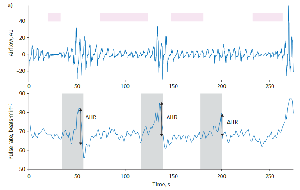
Richard E.K. Russell, Kay Wang
European Respiratory Journal 2020 55: 2001514; DOI: 10.1183/13993003.01514-2020
Getting a true measure of disease prevalence is difficult but fundamental to medicine. The process itself is valuable, but the results have to be reviewed in the context of the healthcare system and country they were collected in. https://bit.ly/2ThxaxF
“It is much more important to know what sort of a patient has a disease than what sort of a disease a patient has.” (unknown)
We are writing this editorial at a time when many of the readers of this journal are living through the coronavirus disease 2019 (COVID-19) crisis. At the moment, the world is locked down. The most urgent question that medicine is trying to answer is: what is the prevalence of COVID-19 infection in any given population? The answer to this question will enable epidemiologists, economists and politicians to make an informed decision about ending the social and physical isolation measures currently in place. This information is critical and essential, not only in this time of COVID-19 but also to allow us to manage any disease. True prevalence is one of the holy grails of long-term condition management, especially for COPD and asthma.
The study by Preteroti et al. from Canada shows how hard this actually is to achieve. In a country with a strong socialised medical system, this group of researchers has boldly attempted to find undiagnosed airway obstruction in a population of metropolitan Canadians from 10 centres. Potential participants were selected using random digit telephone dialling. To call this a feasibility study is perhaps doing the group a disservice; however, it may be considered as such for the rest of the world. This group has served those who would like to look at the true prevalence of airways obstruction by demonstrating what can be achieved and how hard that can be.
The scale of the study was remarkable. The research team called 12 117 households and asked about symptoms of potential breathing problems and previous history. From this initial sweep, 1260 individuals were asked to attend for a detailed assessment. These interviews yielded 184 cases of obstructive lung disease of whom 73 were diagnosed with asthma and 111 with COPD. Unsurprisingly, there was a significant dropout of 28% from invitation to attendance. It was also interesting that from the random sample 3936 individuals reported a diagnosis of asthma or COPD (32%) and so were excluded from the detailed assessment, and a further 954 had used a respiratory medication. It seems to us that the Canadian system is remarkably good at finding and giving a diagnosis or treatment for airways obstruction. This study was able to only find and characterise 184 new patients from a sample of over 12 000, compared with nearly 4000 who had been diagnosed or treated. The investigators were looking for a few hard to reach cases. Clearly having a comprehensive healthcare system has benefits!
Preteroti et al. have helpfully utilised their sample to look at the accuracy of standard but sparsely evaluated diagnostic and screening questionnaires to identify airflow obstruction and lead to a subsequent diagnosis of asthma or COPD. It is unsurprising that the questionnaires did not fare well and, indeed, by looking at a combination of simple descriptive variables with selected individual items taken from the questionnaires, the investigators were able to produce a more accurate screening tool. The questionnaires selected were not all designed to diagnose airway obstruction. The study authors shy away from criticising them individually. They utilise this large study to identify and select the most helpful items and develop a simple 8-item questionnaire which performs to an acceptable level.
Moreover, they recognise that their use of spirometry to diagnose asthma may be limited in utility as many patients with asthma will not demonstrate reversible airway obstruction . Indeed, a standard definition of asthma explicitly describes the need for variability of symptoms and physiology. They authors also acknowledge that adding other measures of airway inflammation would be informative. We agree that, in this age of personalised medicine, other measures of airway biology which are predictive of response to treatment would be an important addition. It is arguable that in many individuals a diagnostic label is less important than biological phenotype and, thus, individualised targeted therapy. It is exciting to know that the authors are looking at a subpopulation to explore this.
The question that we are all asking is: is following the methodology of this study to find obstructive lung disease value for money? In a highly organised, data rich social healthcare system such as Canada, we suspect not. Nearly one-third of individuals contacted had already been diagnosed and the process of finding a small number of new cases was resource intensive, and probably not cost-effective. Population-based screening using routinely collected data available from primary care medical records may have been a more efficient strategy. However, in settings where primary care infrastructure is not well established, the approach used in the present study may have merit. Studies of the impact of airways disease have demonstrated a huge impact of undiagnosed and poorly managed disease from developing countries, and it may well be in these settings that this approach would be worthwhile. Such countries, though, do need to be able to follow through with effective treatment, which may be problematic.
The authors are frank about the unknowns and these also intrigue us. Why do symptomatic patients not seek medical advice? Perhaps they have but via less formal routes, such as the pharmacy or family medical experts. Although this question is a medical sociological one this needs to be understood in order to find those who are seeking informal healthcare and may benefit from medical intervention.
Another question from this data that occurred to us is how many of the participants who underwent spirometry had other spirometric abnormalities or obstruction that could be explained by other health issues? Did the population sweep approach uncover undiagnosed restrictive lung disease, and for some individuals was high body mass index a significant confounding factor?
So, what does this study teach us? We believe that it is important to remember that the diagnosis of asthma is a syndromic one. There is no simple gold standard for diagnosis. A diagnostician puts together the symptoms of asthma with a past history, with the findings of a clinical examination, with objective tests to confirm or refute suspicion. A diagnosis of COPD, in this study population and healthcare setting, is perhaps a little simpler. Breathlessness to any degree, associated with cough and sputum production in those with a significant smoking history is associated with obstructive spirometry likely to be due to underlying COPD. In the first world setting where this study was based it is pleasing to see that an in-depth review was unable to find a significant number of symptomatic undiagnosed patients.
The best tools we have are our clinical experience, skills and judgement. This study tells us that asking the right questions, collecting easily available patient-level data and performing simple investigations can help us identify those at need who will benefit from treatment. But, to be able to have a complete understanding of a disease, its impacts and how to plan care, trying to identify true prevalence is vital.
Footnotes
-
Conflict of interest: R.E.K. Russell has nothing to disclose.
-
Conflict of interest: K. Wang reports an NIHR Programme grant for applied research and an NIHR Postdoctoral Fellowship, outside the submitted work.
-
Support statement: This work was supported by the National Institute for Health Research (NIHR) Oxford Biomedical Research Centre (BRC).
- Received May 1, 2020.
- Accepted May 14, 2020.
- Copyright ©ERS 2020














